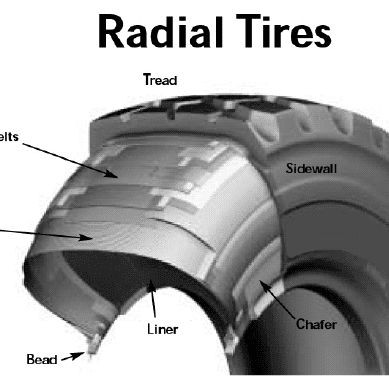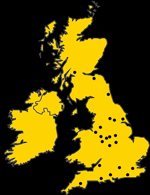Around a month ago, we kicked off our Science Behind Tyre Parts series by looking at Tread. Working from the outside in, The Belts are the obvious next port of call for the series, lying as they do just beneath the tread and above the plies that form the body of the tyre.
An important point to kick off with
Straight away, it’s worth saying that not all tyres have belts, and in fact many earthmovers historically lack them. This is because many earthmover tyres are historically of the more off-the-road-friendly bias type, not the more common radial type.
Radial tyres work well on hard surfaces and at speed, and they resist punctures well because of the protective belts. They do adapt well to uneven surfaces. Too much side wall deflection can result in damage. That said, as technology matures to allow users to have their belts, and eat them too, fewer and fewer bias tyres are seen even in these applications.
What are belts made of?
At the heart, a belt is made of woven steel (kevlar is also becoming popular), which wraps around the circumference or radius of the tyre just beneath the tread. These belts span more or less the full area of the tyre that is designed to make contact with the ground. There is often more than one steel belt, and the belts are held apart by wedge and shoulders running around the outer wall of the tyre to prevent friction or torsion.
How do belts work?
Belts sit around the outside of a tyre (the radius) just beneath the tread, anchored on top of a shoulder at each side. They provide a firm, stable and protective base for the tyre to stand and run on all the time. The aim is to give enough sturdiness and material survivability that most bumpy, uneven and even spiky road surfaces can be traversed without puncture or damage. Meanwhile the shoulders and fittings of the belts are designed to give enough flexibility to allow the tyre to move and rebound naturally without breaking.
Why some earthmover tyres don’t have belts.
While the majority of tyres now have belts, some earthmovers designed for soft, uneven ground with sideways tyre movement work with older non-belted tyres that perform better in these conditions. Whatever task must be done, careful consideration of the firmness and even-ness of the surface will reveal whether belts are needed. Always consult an expert regarding belt and tyre construction choices. Call us on 01430 425885 for help with belt selection.
Share this post


